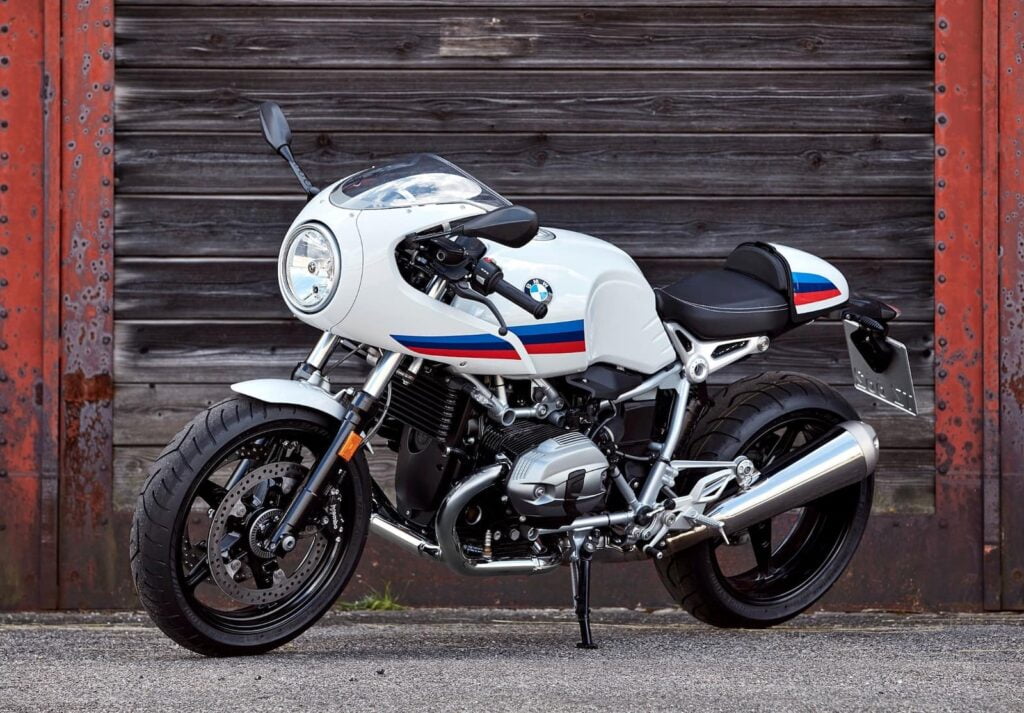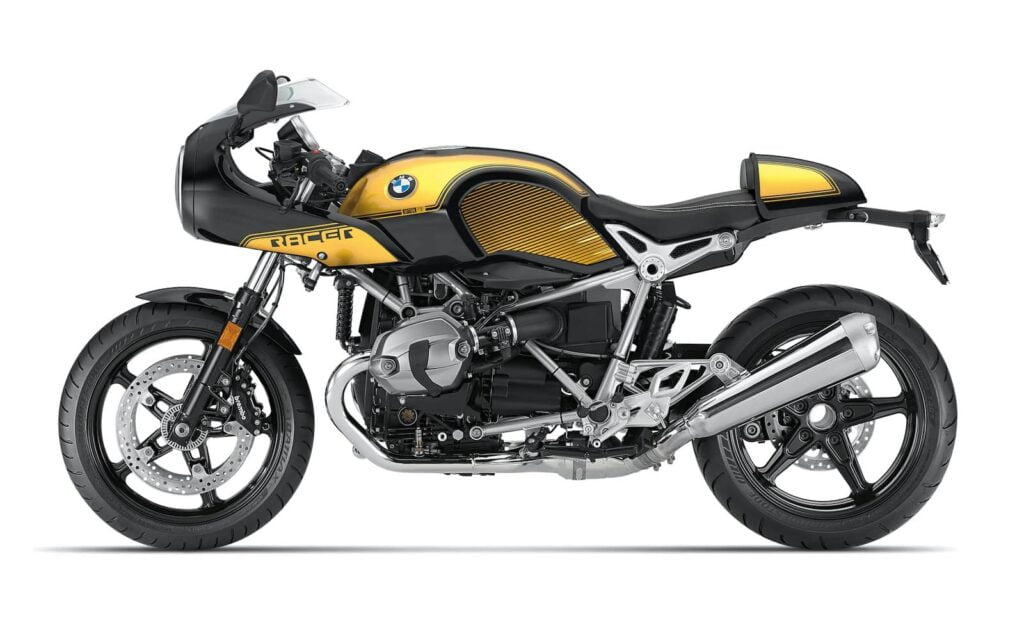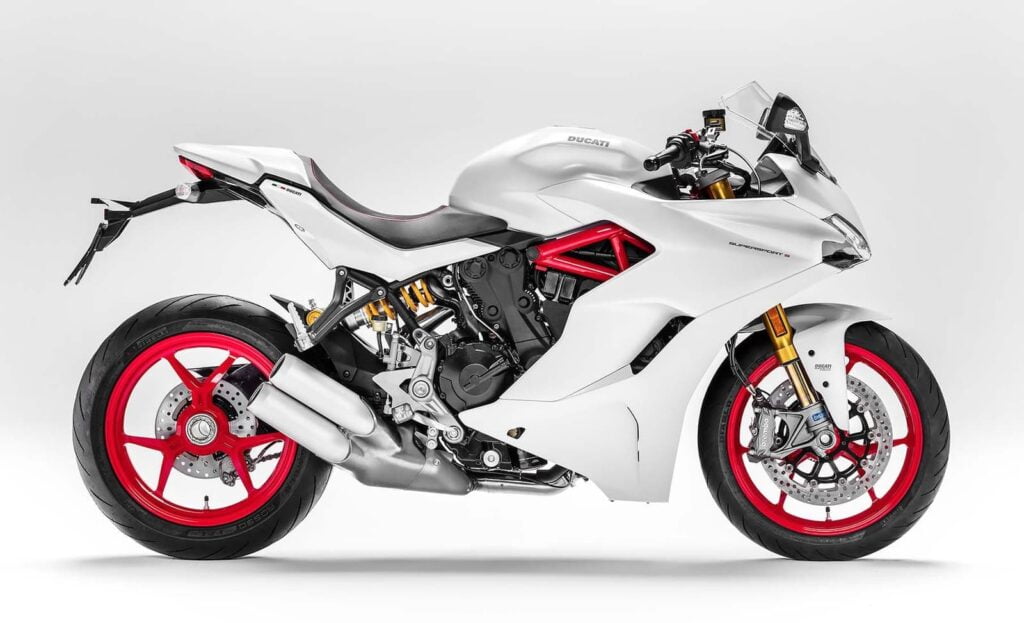2019 Bmw R Nine T Racer
One motorcycle I regularly lust after — basically every time I see a photo of it, or occasionally see it in person — is the BMW R nineT Racer. It's one of the bikes I put down as the most beautiful motorcycle of 2019 — and unfortunately, that was the last year I could!
The BMW R nineT Racer reminds me a lot of the BMW R 1200 S, a motorcycle I owned for around six months before realising it was a little too "gentlemanly" for me. Basically a sports bike for a few years down the line.
But while the R nineT line is going strong (they've kept every other variant, including the Pure, the Scrambler, and… the others), BMW decided to retire the Racer in 2019 due to poor sales. Why did they do this? I wanted to figure it out, and here it all is.
See here for a full explanation of the BMW R nineT line, comparing all the models and similarities/differences.

Are you obsessed with motorcycles?
Well, I am. That's why I created this site — as an outlet. I love learning and sharing what others might find useful. If you like what you read here, and you're a fraction as obsessed as I am, you might like to know when I've published more. (Check the latest for an idea of what you'll see.)
General info about the BMW R NineT Racer

In principle there's a lot to love about the BMW R nineT Racer.
Here's what I really like about it:
- Classic and reliable boxer engine — 1,170 cc air/oil-cooled twin-cam two-cylinder horizontally opposed engine. (the "camhead" engine — see my guide to BMW motorcycle engines). These engines are known to go 100K+ kms in other bikes like the R 1200 GS.
- Air/oil-cooling – no coolant to have to worry about replacing
- Approachable power — 81 kW / 110 hp @ 7750 rpm, and 116 Nm / 86 lb-ft @ 6,000 rpm. This isn't a bike you have to rev out to the moon.
- Shaft drive — lower maintenance than a chain (just change the oil every 10,000 kms, although there is less flexibility)
- Moderate weight — not a featherweight at 219kg (483 lb) wet, but not over-heavy for a classically designed bike
- IT LOOKS
The only other colour option for the BMW R nineT Racer was the "Spezial" yellow and black.

There was also the Racer S model, which I see for sale … almost never. People either didn't buy them, or keep them!
The BMW R nineT Racer S replaces the standard Racer's cast 17-inch wheels with wire-spoked wheels, and also added heated grips, chromed exhaust and LED indicators.
Why did the BMW R nineT Racer fail?
So what wasn't so good about the R nineT Racer?
There were a few things that weren't so great about it and which led to poor sales.
- Basic suspension. The standard (not "upside-down") forks are the first giveaway that these aren't race-spec forks. The standard forks aren't even adjustable. This is a real let down, as its spiritual ancestor the R 1200 S had telelever suspension and even came with an Öhlins option. If you push the R nineT Racer hard, it bottoms out the brakes and rebounds too quickly, triggering the ABS.
- Ground clearance — for a racy bike, the R nineT Racer doesn't really lean. It leans enough for commuting, of course, but it doesn't go anywhere near as far as it should. It's those cylinder heads! They do get in the way after a while.
- Aggressive position — it's really sporty in riding position. This isn't a "sport tourer". The position is close to that of a S 1000 RR.
The low-grade suspension of the BMW R nineT deserves an extra mention. It's not that it's low quality — I'm sure BMW knows how to make a lot out of simple components — but it's very basic in design.
- Most significantly, the suspension is not adjustable. Even modestly sporty bikes have adjustable pre-load and compression damping, and are criticised for lacking full adjustability.
- Secondly, the suspension a conventional damper rod, rather than a cartridge design. Damper rods are very limited in the dynamic range of conditions they can accommodate. When dialed in with preload, they can be OK on smooth roads going at even speeds. But then they'll be harsh on bumps, and have dive into braking and turns. And let's not forget that that's if they're dialed in — you can't even dial in these forks as they're non-adjustable.
- Finally, they're conventional, not upside down. This isn't a big issue, but upside-down forks reduce unsprung weight and, alongside lightweight wheels, are a common feature of sportbikes since the early 2000s.
(Want more on all this? See our article that's all about how motorcycle forks work explained simply for more background.)
All of the above factors might be tolerable on a cheap bike like a Honda CB250, but on a premium bike with otherwise high build quality, they caused people to look at alternatives.
The combination of the aggressive riding position, moderate power, and not great suspension and ground clearance just didn't add up for many buyers. The Triumph Thruxton R is a more obvious choice, and BMW's stablemate the S 1000 RR would just be looking at you saying "excuse me? What about me?"
The combination of the standard suspension, all that extra weight over the front wheel (created by the forward-leaning stance), and the narrow clip-ons means that the R nineT Racer is much less agile than its brethren. It's quite unwieldy at slow-speeds — you're constantly afraid of dropping it. And you'd be at high risk of it if the single seat weren't so low.
It's not to say that the R nineT Racer is unpleasant to ride. It's standard for a café racer — fun at slow to moderate speeds, and with inevitable wrist-ache, because you probably are never going to take this bike too far.
The biggest problem, I think (subjectively) is that people looking for an old classic tend to think of more upright-styled motorcycles, like the rest of the R nineT stable, or something like a Triumph Speed Twin (or the many other motorcycles of that style).
The suspension can be improved, though. Looking over forums, a few approaches are to modify the springs (to increase travel), to modify the damper (here's a good how-to guide) to add cartridges, or just to replace them with Öhlins units. I like the simpler modifications because those at least keep the conventional forks — meaning fork oil changes are easier.
Alternatives to the BMW R nineT Racer
There are a few very worthy alternatives to the BMW R nineT Racer that helped seal its fate. The Racer may look nice and go modestly fast, but there were other bikes that went faster and looked just as nice, or who went a lot faster and looked not as "classic", but were right there next to the Racer in the same showroom.
Triumph Thruxton 1200 RS
If I were shopping for an R nineT Racer… and I always kind of am, every time I see one… then I'd probably first look at a Triumph Thruxton 1200 RS. And yes, I'd get the café racer cowl.

The Thruxton RS has similar performance specs to the R Nine T racer, is similarly attractive, but solves a few key problems:
- Better suspension — the R and RS have better suspension than the standard
- Better ground clearance — no big cylinder blocks that will get in your way
- Better electronics — lte model Triumphs have cornering ABS, traction control, and everything you'd need.
The downsides? Well, it's not a boxer. It doesn't have that gorgeous single-sided swing-arm. And it has a chain, which is higher maintenance than a shaft drive (but at least gives you more flexibility with sprockets).
All up, it'd be a tough choice for me. If I got the R NineT racer, I'd definitely invest in a suspension upgrade after a while.
Ducati Supersport (S)
The second alternative to the BMW R nineT Racer is the Ducati Supersport. I'd probably opt for the S version just for that Öhlins front suspension.

The Ducati Supersport has similar power output to the R nineT Racer, produced by a water-cooled V-twin that's under bodywork.
They're both beautiful motorcycles, but the Supersport is undeniably more racer than "retro". It's really a more comfortable Panigale.
Despite the racier looks, the Ducati Supersport also more comfortable than the R nineT Racer. Both will have your knee bent a similar amount, but the Supersport has higher handlebars, and better wind protection.
The major downside to a Supersport is that you have to get the Ducati servicing done. Even though Ducati is gradually moving to chain-driven cams, and even though the valve service interval is increasingly wide, you still do have to get replace the Duc's belts every five years and get the valves checked every 30,000 km (18,000 miles).
The intervals are wide, but when the Desmo service comes up, you'll swear at the cost. Two cylinders, under all that bodywork, then four valves per cylinder, then desmo cams… that's a lot of checks. And Ducatis generally do need adjustments. So it's generally at least half a day's labour.
Still, I'd take the Duc. But that's because I don't mind fairings.
Some BMW fanatics may say that "Ducatis are not reliable", but there's no good, granular data to support this assertion at the Supersport vs Racer level. A lot of questions are raised about reliability of early Ducatis and BMWs, but it changes engine to engine, and modern motorcycles from either stable are a far cry from the air-cooled missiles of the 90s.
BMW S 1000 RR

Finally, there's trouble from BMW's own stablemate, the S 1000 RR.
"But this RR is no hipster bike!" you cry, if you admit you're a hipster, anyway. "It has fairings and everything."
Ah, so true. But it does go fast, and handles well. It's the "Racer" that the R nineT Racer isn't.
While the two bikes are very different — the Racer being a meandering, nostalgic sportbike and the S 1000 RR being an actual sportbike, the fact that they both come from BMW gives one insight into why the Racer died. You wander into a dealership with a lot of cash, see two expensive bikes, and can very clearly see the advantages of the RR over the Racer. You'd have to be very passionate about nostalgia or aesthetics to pick the Racer in the line-up.
If you're more intrigued about the S 1000 RR and its history, check out my buyers guide here.
Sum up
I don't mean to heap a pile of dirt on the R nineT Racer. As I mentioned, I do think it looks crazy good. And there's a certain joy in having a piece of artwork in the garage, or parked out front of the cafe.
I've seen a number of R nineT Racers sell with only a few thousand kilometres on them. The kind of person who buys one and then sells it probably had multiple bikes in the stable, and rarely opted for the R nineT Racer.
One thing's for sure — it's going to look good for a while. So if you're interested in picking one up and fixing some of the issues that made it hard to ride, then you might just have a future classic. It's always the niche bikes that become cult classics, after all!

Rider, hacker, and self-taught everything. I have lived in a dozen countries, speak almost as many languages, can deadlift a motorcycle, make a mean cappuccino, and do one great card trick.
Source: https://motofomo.com/bmw-r-ninet-racer-what-happened/

Tidak ada komentar: